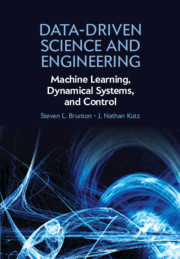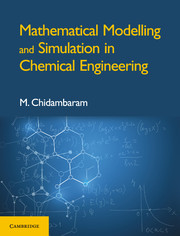Refine search
Actions for selected content:
2540 results in Computational Science
9 - Balanced Models for Control
- from Part III - Dynamics and Control
-
- Book:
- Data-Driven Science and Engineering
- Published online:
- 15 February 2019
- Print publication:
- 28 February 2019, pp 321-344
-
- Chapter
- Export citation
2 - Fourier and Wavelet Transforms
- from Part I - Dimensionality Reduction and Transforms
-
- Book:
- Data-Driven Science and Engineering
- Published online:
- 15 February 2019
- Print publication:
- 28 February 2019, pp 47-83
-
- Chapter
- Export citation
6 - Neural Networks and Deep Learning
- from Part II - Machine Learning and Data Analysis
-
- Book:
- Data-Driven Science and Engineering
- Published online:
- 15 February 2019
- Print publication:
- 28 February 2019, pp 195-226
-
- Chapter
- Export citation
Part II - Machine Learning and Data Analysis
-
- Book:
- Data-Driven Science and Engineering
- Published online:
- 15 February 2019
- Print publication:
- 28 February 2019, pp 115-116
-
- Chapter
- Export citation
8 - Linear Control Theory
- from Part III - Dynamics and Control
-
- Book:
- Data-Driven Science and Engineering
- Published online:
- 15 February 2019
- Print publication:
- 28 February 2019, pp 276-320
-
- Chapter
- Export citation
1 - Singular Value Decomposition (SVD)
- from Part I - Dimensionality Reduction and Transforms
-
- Book:
- Data-Driven Science and Engineering
- Published online:
- 15 February 2019
- Print publication:
- 28 February 2019, pp 3-46
-
- Chapter
-
- You have access
- Export citation
Contents
-
- Book:
- Data-Driven Science and Engineering
- Published online:
- 15 February 2019
- Print publication:
- 28 February 2019, pp v-viii
-
- Chapter
- Export citation
Part I - Dimensionality Reduction and Transforms
-
- Book:
- Data-Driven Science and Engineering
- Published online:
- 15 February 2019
- Print publication:
- 28 February 2019, pp 1-2
-
- Chapter
- Export citation
Common Optimization Techniques, Equations, Symbols, and Acronyms
-
- Book:
- Data-Driven Science and Engineering
- Published online:
- 15 February 2019
- Print publication:
- 28 February 2019, pp xiii-xxii
-
- Chapter
- Export citation

Data-Driven Science and Engineering
- Machine Learning, Dynamical Systems, and Control
-
- Published online:
- 15 February 2019
- Print publication:
- 28 February 2019
-
- Book
- Export citation

Mathematical Modelling and Simulation in Chemical Engineering
-
- Published online:
- 23 October 2018
- Print publication:
- 06 December 2017
Chapter 3 - Approximation of Functions from Anisotropic Sobolev and Nikol’skii Classes
-
- Book:
- Multivariate Approximation
- Published online:
- 06 July 2018
- Print publication:
- 19 July 2018, pp 81-128
-
- Chapter
- Export citation
Chapter 5 - The Widths of Classes of Functions with Mixed Smoothness
-
- Book:
- Multivariate Approximation
- Published online:
- 06 July 2018
- Print publication:
- 19 July 2018, pp 191-243
-
- Chapter
- Export citation
Contents
-
- Book:
- Multivariate Approximation
- Published online:
- 06 July 2018
- Print publication:
- 19 July 2018, pp v-viii
-
- Chapter
- Export citation
References
-
- Book:
- Multivariate Approximation
- Published online:
- 06 July 2018
- Print publication:
- 19 July 2018, pp 520-531
-
- Chapter
- Export citation
Chapter 8 - Greedy Approximation
-
- Book:
- Multivariate Approximation
- Published online:
- 06 July 2018
- Print publication:
- 19 July 2018, pp 387-448
-
- Chapter
- Export citation
Chapter 9 - Sparse Approximation
-
- Book:
- Multivariate Approximation
- Published online:
- 06 July 2018
- Print publication:
- 19 July 2018, pp 449-499
-
- Chapter
- Export citation
Chapter 6 - Numerical Integration and Approximate Recovery
-
- Book:
- Multivariate Approximation
- Published online:
- 06 July 2018
- Print publication:
- 19 July 2018, pp 244-320
-
- Chapter
- Export citation
Index
-
- Book:
- Multivariate Approximation
- Published online:
- 06 July 2018
- Print publication:
- 19 July 2018, pp 532-534
-
- Chapter
- Export citation
Chapter 1 - Approximation of Univariate Functions
-
- Book:
- Multivariate Approximation
- Published online:
- 06 July 2018
- Print publication:
- 19 July 2018, pp 1-35
-
- Chapter
-
- You have access
- Export citation
